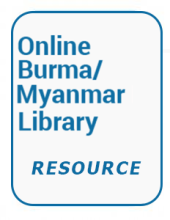Land Library Search
Through our robust search engine, you can search for any item of the over 73,000 highly curated resources in the Land Library.
If you would like to find an overview of what is possible, feel free to peruse the Search Guide.
/ library resources
Showing items 1 through 9 of 280.To ensure a better and more sustainable future for all, the 2030 Agenda for Sustainable Development (“the 2030 Agenda”) has identified 17 Sustainable Development Goals (SDGs) to be achieved by 2030.
This report presents the results of the multi-country assessment carried out in 17 countries across the world.
This publication features the key provisions on land (governance) in recent relevant international frameworks including the 2030 Agenda for Sustainable Development (SDGs), the New Urban Agenda (Habitat III), the Voluntary Guidelines on the Responsible Governance of Tenure of Land, Fisheries
While Burma’s ethnic states are blessed with a wealth of natural resources and biodiversity, they
have been cursed by the unsustainable extraction and sale of those resources, which has fuelled
Myanmar may soon face a land conflict epidemic as a result of the growing influx of investments and
the consequent demand for land, unless laws and policies that adequately address land rights issues
are urgently adopted and implemented.
Burma is situated in Southeastern Asia, bordering Bangladesh, India, China, Laos and Thailand. The
majority of its population lives in rural areas and depends on land as a primary means of livelihood.
မြနမ် ာနိငု ်င၏ံ
ရေရှညတ် ညတ် သံ့ ည့ ်
မြေယာအပု ခ် ျုပေ် ရးနှင့ ်
စီမခံ န့ခ် ွဲမစှု နစ်ဆသီ ိ့…ု .
မြေယာကဏ္ဍ၏ လိအု ပခ် ျကမ် ျားအပေါ် စစီ စအ် ကဲဖြတမ် ဆှု ိငု ရ် ာ
အကြောငး် အရာအလိကု ် မဝူ ါဒရေးရာမတှ စ် မု ျား
This policy note on Land Policy and Regulatory Framework in Myanmar is the first of five policy notes
prepared under the Land Sector Needs Assessment technical assistance initiative between the World Bank
This article explores some of the realities of supporting income generation for displaced people in conflict settings, drawing on experiences in Kachin, northern Myanmar, suggesting development and humanitarian actors need to better acknowledge limitations and rethink our approaches.



